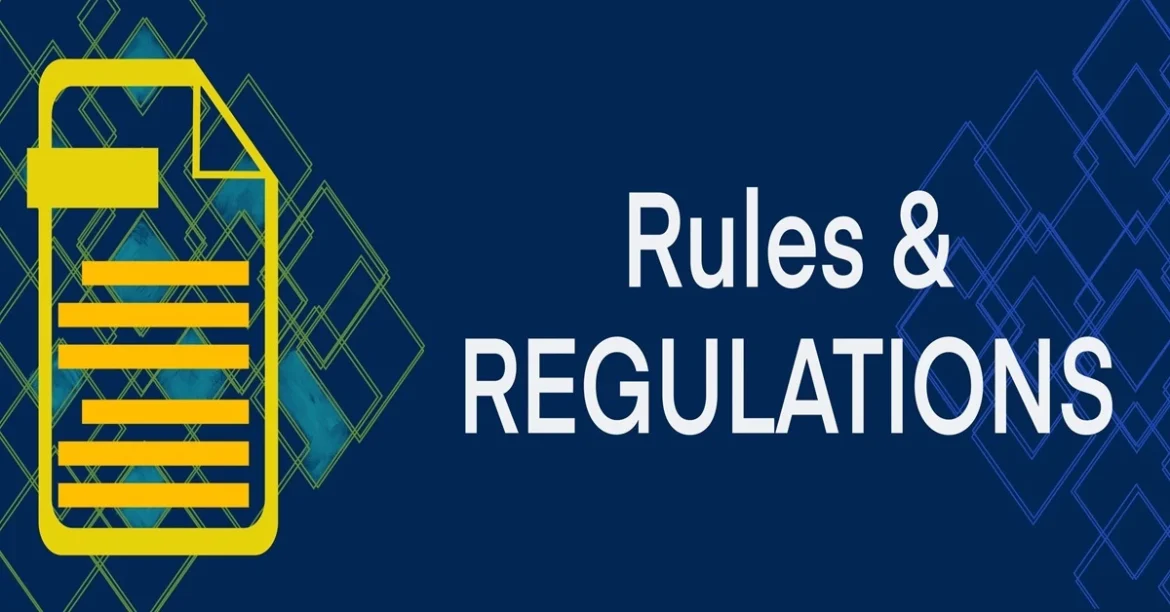Key Takeaway
The 2025 Draft CRI Guidelines mark a turning point in how India examines software patents. They clarify how Section 3(k) exclusions apply, expand guidance on AI/ML inventions, and emphasize “technical effect” as the gateway to eligibility. For innovators, startups, and patent professionals, these rules provide both challenges and new opportunities to secure protection in India’s fast-evolving tech patent landscape.
Introduction
In March 2025, the Indian Patent Office (IPO) released the Draft Guidelines for Examination of Computer-Related Inventions (CRI Guidelines 2025), followed by a revised draft in June and a final version in July 2025. This move reflects India’s effort to align software patentability standards with global innovation trends while staying rooted in its statutory framework—especially Section 3(k) of the Indian Patents Act.
For innovators, particularly those in AI, machine learning, blockchain, quantum computing, and cloud technologies, these guidelines matter because they shape how computer-implemented inventions will be examined and whether your IP strategy succeeds or fails.
Why the 2025 Draft CRI Guidelines were Formed
The 2025 Draft CRI Guidelines were formed to modernize India’s patent framework for computer-related inventions (CRIs) by providing greater clarity, aligning with recent judicial precedents, and adapting to rapid technological advancements like AI and blockchain. The guidelines aim to ensure examiners apply a uniform standard, streamline the patent process, foster innovation, and strengthen India’s competitiveness in the global IP landscape.
The last CRI guidelines were issued in 2017. These 2017 guidelines replaced the earlier 2016 version and made significant changes, including relaxing patentability criteria and removing the requirement for novel hardware. Since then, technology has evolved rapidly:
- AI/ML models are powering everything from drug discovery to fintech.
- Blockchain and distributed ledgers have created entirely new business ecosystems.
- Edge and cloud computing are now default infrastructure.
- Quantum computing is moving from labs into commercial pilots.
The 2017 guidance did not address these adequately, leading to inconsistent examination practices. Courts also stepped in through cases such as Ferid Allani v. Union of India (2020), Microsoft Technology Licensing v. Assistant Controller of Patents (2023), and OpenTV v. Controller of Patents (2024), clarifying that software inventions are not per se excluded if they demonstrate a technical effect.
Thus, the 2025 Draft CRI Guidelines were designed to:
- Update the framework to cover emerging technologies.
- Ensure uniformity across IPO’s patent examiners.
- Bridge law and practice by embedding judicial precedents into examination steps.
- Clarify expectations for AI/ML-related patent disclosures.
Section 3(k): The Heart of the Debate
Section 3(k) of the Indian Patents Act excludes from patentability:
- Mathematical methods,
- Business methods,
- Computer programs per se, and
- Algorithms.
This provision has historically been the biggest hurdle for software patent guidelines in India. The 2025 Draft Guidelines reaffirm this but offer a step-wise assessment to determine whether a claimed invention is merely excluded subject matter “as such” or a genuine technical solution to a technical problem.
What’s New in the 2025 Draft CRI Guidelines
1. Updated Definitions
The draft clarifies the meaning of terms like “algorithm,” “computer program per se,” and “technical effect.” For instance, algorithms are framed in line with the Madras High Court’s Microsoft ruling (2024), ensuring consistency between law and practice.
2. Business Methods = Absolute Bar
Unlike the EPO or UK, India treats business methods as completely non-patentable—even if implemented through technology. The draft, echoing the OpenTV judgment, closes the door on claims that are fundamentally business solutions dressed as technical innovations. The core takeaway is that if the substance of an invention is a business, commercial, or financial activity, it is not patentable in India, even if it involves a technical solution or demonstrates technical advancement.
3. Emphasis on Technical Effect
Examiners are instructed to look for technical effect or technical contribution, such as:
- Reduced memory access or faster processing,
- More efficient compression and storage,
- Improved signal transmission/reception,
- Enhanced security protocols,
- Control of industrial or surgical robotic arms.
This makes it easier to demonstrate that an invention solves a technical problem rather than just a business or abstract one
4. AI/ML-Specific Disclosure Requirements
Perhaps the most significant shift: applicants must provide sufficient disclosure when claiming AI/ML inventions. This includes:
- Architecture of the model,
- Input/output data characteristics,
- Training and validation processes,
- Parameters and control variables,
- Test results validating technical improvements
5. Illustrative Examples
The draft introduces examples showing what is patentable vs. non-patentable. For instance:
- Allowable: A network security system that prevents cookie theft in authentication.
- Not Allowable: A new pricing method or business model, even if implemented in code.
6. Clarification of Status
The IPO makes clear: these guidelines are not law. The Indian Patents Act and Rules prevail. But in practice, examiners rely on guidelines for consistency, so innovators must draft applications accordingly.
The Examination Lens: How Examiners Will Look at Your CRI Application
Based on the 2025 Draft CRI Guidelines, here’s the likely step-wise approach:
- Is it a business method?
If yes → automatic rejection under Section 3(k). - Is it only an algorithm or program?
If novelty lies only in abstract steps or code, objection under 3(k). - Is there a technical effect?
If the invention shows a measurable system-level impact (e.g., reduced latency, improved throughput, better memory utilization), it may pass. - Is the AI/ML disclosure enabling?
Claims must avoid being black boxes; details and evidence are required.
What This Means for Innovators
For startups and corporates alike, the 2025 Draft CRI Guidelines signal a new discipline in CRI patent examination practices. Here’s what you should do:
Drafting Strategy
- Frame inventions as solutions to technical problems—not abstract logic or business flows.
- Anchor claims in system-level improvements (network, memory, device, processor).
- For AI/ML inventions, ensure full disclosure—from architecture to test results.
Filing Tactics
- Split applications: one covering core system improvements, another for application-layer features.
- Use dependent claims to highlight performance benchmarks, resource efficiencies, or security enhancements.
Prosecution Playbook
- When facing a Section 3(k) objection, argue systematically: not a business method, not a mere program, presence of technical effect, and enabling disclosure.
- Cite relevant precedents: Ferid Allani (technical effect test), Microsoft (network security technical contribution), OpenTV (business methods absolute bar).
Implications for India’s Tech Ecosystem
The 2025 CRI Guidelines India reforms are not just procedural—they impact the entire innovation ecosystem:
- Startups gain clearer roadmaps for patenting software-driven inventions, boosting IP portfolios.
- Enterprises can better align global filings with Indian requirements, avoiding costly rejections.
- Patent professionals now have structured arguments and disclosure checklists, reducing uncertainty.
- Investors may see greater IP-backed valuation potential for Indian tech startups.
This balance—protecting real innovations in software and IP rights while filtering out abstract or business-only methods—may encourage more credible tech patents in India.
Key Takeaway
The 2025 Draft CRI Guidelines represent India’s most ambitious attempt yet to bring clarity to computer-related inventions patent examination. For innovators, they are both a challenge and an opportunity. Success lies in framing software not as abstract logic, but as a technical innovation that improves real-world systems.
As India CRI patent reforms 2025 take shape, startups and enterprises should align filing strategies early—embracing detailed disclosure, focusing on technical contributions, and steering clear of excluded subject matter. The result could be a stronger, more credible ecosystem for software patent guidelines India, positioning the country as a leader in the next era of digital innovation.
FAQs
1. What are CRI Guidelines, and why are they important?
CRI Guidelines are examination manuals issued by the IPO for computer-related inventions. They standardize how Section 3(k) exclusions are applied, ensuring predictability for innovators.
2. What’s new in the 2025 Draft CRI Guidelines?
They expand coverage to AI, blockchain, cloud, and quantum; mandate detailed AI/ML disclosures; provide examples; and reaffirm business methods as absolutely excluded.
3. What is Section 3(k) of the Indian Patents Act, and how does it impact CRI filings?
Section 3(k) excludes mathematical methods, business methods, computer programs per se, and algorithms. To pass, applicants must show a technical effect or contribution beyond these.
4. Can software be patented under the 2025 Draft Guidelines?
Yes, but not “as such.” Pure algorithms or business methods cannot be patented. However, if software leads to a technical solution—such as reducing latency or improving security—it may be patentable.
5. How do the 2025 Draft Guidelines treat AI and machine learning inventions?
AI/ML inventions are patentable if sufficiently disclosed and if they demonstrate a technical effect. The IPO expects details of model architecture, processes, and performance validation.



